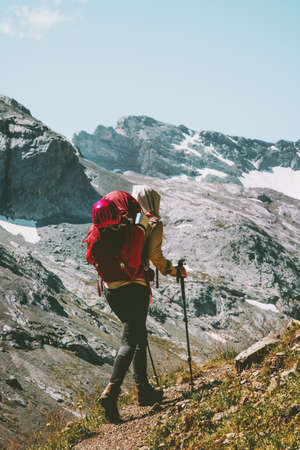Dialing In Your Gear for the PCT
When you’re planning a Pacific Crest Trail (PCT) thru-hike, your gear isn’t just equipment—it’s your lifeline. Every ounce on your back will matter over 2,650 miles, so getting it right is critical. Let’s break down what you’ll need, how to balance ultralight with comfort, and why your setup will probably change as you go.
The Big Three: Shelter, Sleep System, Pack
| Category | Typical Choices | Key Considerations |
|---|---|---|
| Shelter | Tent, tarp, bivy sack | Weather protection, weight, ease of setup |
| Sleep System | Sleeping bag/quilt, sleeping pad | Temperature rating, packability, comfort vs. weight |
| Backpack | Internal frame/frameless packs (45-65L) | Total weight capacity, fit, durability |
Shelter: Your Home on the Trail
A freestanding tent is popular for its quick pitch and solid storm protection. Ultralight hikers might go with a tarp or bivy to cut ounces—just be ready for less comfort and more exposure in bad weather.
Sleep System: Don’t Skimp on Rest
Many thru-hikers now use quilts for their lighter weight and flexibility. Make sure your bag or quilt is rated for at least 20°F (-6°C)—the Sierra Nevada can throw frost at you even in June. An inflatable pad offers great comfort but can pop; foam pads are bombproof but bulkier.
Packs: Carry Only What You Need
Your pack should fit well and match your base weight. Internal frame packs give structure if you carry more than 20 lbs; frameless options make sense if you’ve dialed your kit ultralight (sub-10 lbs base weight).
Layering Strategy: Prepare for Anything
The PCT throws all kinds of weather at you—scorching desert sun, snow in the Sierra, rain up north. Dial in a layering system that keeps you warm and dry without weighing you down:
| Layer Type | Examples |
|---|---|
| Base Layer | Synthetic or merino top & bottom (for warmth & moisture wicking) |
| Insulation Layer | Puffy jacket (down/synthetic), fleece pullover (for cold mornings/nights) |
| Shell Layer | Rain jacket & pants (for wind/rain protection) |
| Wind Layer | Lightweight windbreaker (packs tiny but makes a big difference) |
Footwear Choices: Boots vs. Trail Runners
If there’s one debate every PCT hiker faces, it’s boots versus trail runners. Here’s how they stack up:
| Shoe Type | Pros | Cons |
|---|---|---|
| Trail Runners | Lighter, dry fast, less foot fatigue, flexible sole adapts to terrain | Sacrifice ankle support & durability; expect to go through 4-6 pairs per hike |
| Hiking Boots | Ankle support & durability; better for early-season snow travel | Heavier, dry slowly, can cause blisters when wet |
Ultralight vs. Comfort Tradeoffs: What Really Matters?
| Go Ultralight If… | Stick With Comfort If… |
|---|---|
| You want to cover big miles daily You’re willing to sacrifice some luxury You have experience with minimalist setups |
You prioritize sleep quality You need extra support for injuries You want backup gear for peace of mind |
No matter what you choose, remember this iron rule: ounces add up to pounds—and pounds add up to pain. Cut what you don’t truly need. But don’t gamble with safety; in the high Sierra or Washington rain, “just enough” gear can mean “not enough.” Test everything before your first mile.
The Reality of Gear Swaps and Extreme Weather Prep
Your setup won’t stay static—most hikers swap gear out at Kennedy Meadows (mile 700) before entering the Sierra for bear cans and warmer bags. You may send home ice axes or microspikes after the snow is gone. For NorCal and Oregon heat waves, ditch the heavy layers and focus on sun protection instead.
If it fits your budget, consider bounce boxes—mail yourself alternate gear ahead so you can adapt quickly without buying new stuff mid-trail.
Why Every Ounce Matters on the PCT
Painful knees and backs end more thru-hikes than any other factor except injury. Saving a pound here or there could mean finishing—or quitting—in the long run. Before you hit the trail, walk around your neighborhood with your loaded pack and ask yourself honestly: would I want to carry this day after day? That’s how you know you’re ready for the PCT.
2. The Permit Gauntlet: Securing Your Golden Ticket
Step-by-Step Guide to the PCT Long-Distance Permit
If you’re aiming to thru-hike the Pacific Crest Trail (PCT), getting your permit is the first real test. The PCT long-distance permit covers your entire hike, but competition is fierce and quotas are tight. Here’s how to lock down your golden ticket:
- Create a PCTA Account: Sign up on the Pacific Crest Trail Association website. You’ll need this for permit applications.
- Know the Release Dates: Permits typically open in late October and again in January. Mark your calendar—the best dates fill up within minutes.
- Understand Trail Quotas: Only 50 permits per day are issued for northbound starts from the Southern Terminus. Have backup dates ready in case your top choice is full.
- Complete the Application: When the portal opens, select your start date, fill in personal info, and agree to Leave No Trace principles and trail regulations.
- Wait for Confirmation: You’ll get an email if you snag a spot. Print your permit and keep it accessible—rangers will check it.
PCT Permit at a Glance
| Type | Coverage | When to Apply |
|---|---|---|
| PCT Long-Distance Permit | 500+ miles in one trip | Oct/Jan (see PCTA) |
| California Fire Permit | Use of stove/fire in CA | Anytime online |
| Canada Entry (if finishing north) | PCT Northern Terminus into Canada | Apply after US permit secured |
If You Miss Out on a Long-Distance Permit
- Pivot Start Date or Location: Try less popular start dates or flip-flop sections of trail. Southbound and alternative entry points have different quotas.
- Section Hiking: If you don’t get a thru-hiker permit, apply for local wilderness permits as needed. Check each national forest or park’s website for details.
- Stay Flexible: Plans change fast—have several backup itineraries before permits open.
Key State Permits & Border Crossings
- California Fire Permit: Required for all hikers using camp stoves or building fires anywhere in California. Take the short quiz and print your certificate here.
- Canada Entry Permit: If you plan to finish at the Northern Terminus and walk into Canada, apply early through Canadian immigration (details here). No exceptions—do not cross without one.
- Bears & Bear Canisters: Yosemite, Sequoia-Kings Canyon, and other sections require bear canisters. These are checked by rangers—don’t risk it.
PCT Regulations & Leave No Trace Tips
- No Camping Zones: Some areas restrict camping to designated sites only. Respect signage and avoid stealth camping.
- No Fires Above 10,000 Feet: In California, fires are illegal above this elevation—even with a fire permit.
- Packing Out Trash: “Pack it in, pack it out.” Carry all waste—including food wrappers and toilet paper—to preserve the wild experience for everyone.
- Bury Human Waste Properly: Dig cat holes at least 6-8 inches deep and 200 feet from water sources. Use biodegradable soap only if necessary.
- Avoid Spreading Invasive Species: Brush off boots and gear before moving between ecosystems.
Tough Love: Rangers Are Watching
The PCT is heavily patrolled—don’t try shortcuts or ignore regulations. Fines are steep, but more importantly, responsible hiking keeps access open for future generations. Get your paperwork squared away early so you can focus on enjoying every step from Mexico to Canada—or wherever your journey takes you.

3. Mastering Trail Logistics and Resupply
Trail Food Resupply: Smart Strategies for Staying Fueled
On the PCT, your resupply plan can make or break your hike. You’ll need to balance calories, nutrition, and convenience. Most hikers use a mix of buying food in trail towns and mailing themselves resupply boxes. Here’s how each method stacks up:
| Resupply Method | Pros | Cons |
|---|---|---|
| Buy In Town | Flexible, supports local businesses, no shipping hassle | Limited options in small towns, higher prices, risk of stockouts |
| Mail Boxes | Control over food quality/variety, dietary needs met | Post office hours, shipping costs, risk of missed packages |
How to Mail Yourself Boxes Like a Pro
- Pre-pack boxes at home: Label with your name and “PCT Hiker ETA [date].” Use sturdy boxes.
- Ship to: Post offices (General Delivery), hostels, or stores that accept hiker packages (always call ahead).
- Bounce box: This is a box you forward up the trail with extra gear, chargers, toiletries—things you don’t need every stop.
- Pacing matters: Estimate your hiking speed so boxes arrive before you do.
PCT Trail Towns: Where to Stop?
Your resupply stops depend on distance between towns and what each town offers. Some classic stops include:
| Mile Marker | Town/Stop | Why Stop? |
|---|---|---|
| 179 | Idyllwild, CA | Lodging, groceries, post office, good rest spot after San Jacinto climb. |
| 454 | Aqua Dulce, CA (Hiker Heaven) | Legendary hiker hospitality, mail drops accepted. |
| 789-900+ | Kennedy Meadows & Sierra Towns (Lone Pine, Bishop) | Sierra gateway—time to swap gear and get bear canister. |
| 2100+ | Ashland, OR & Cascade Locks, OR | Larger grocery stores and rest options as you enter Oregon/Washington. |
Bouncing Ahead: Keeping Your Hike Flexible
If you’re moving faster or slower than expected, or if plans change due to fire closures or injury, don’t panic. Use “bounce boxes” to send gear or supplies further up the trail. Many hikers also skip certain towns if they’re well stocked from a previous stop—adaptability is the key to survival out here.
Tactical Water Planning for Desert Stretches
The Southern California desert isn’t just hot—it’s dry and unpredictable. Water caches are unreliable; never count on them. Always carry a physical copy of the latest water report (printouts or downloaded PDF on your phone) and plan to carry 4-6 liters between reliable sources during long dry stretches like the Mojave. Know your own limits: dehydration takes hikers off trail faster than blisters or bears.
PCT Water Planning Table (Desert Sections Example)
| Mile Markers (SoCal) | Main Sources / Notes |
|---|---|
| 20-100 (Campo-Lake Morena-Mt. Laguna) | Sparse; check water reports daily; springs may be seasonal. |
| 150-200 (Anza Borrego-Idyllwild) | Cattle troughs & tanks; treat all water before drinking. |
| 300-342 (Cajon Pass – Wrightwood) | Icy cold creek at Deep Creek; unreliable elsewhere—stock up! |
| 500-702 (Tehachapi – Kennedy Meadows) | Mojave: brutal heat; some stretches 25+ miles dry—carry max capacity! |
Sierra Bear Canisters: When & Why You Need Them
Bears in the Sierra aren’t just curious—they’re smart. Between Kennedy Meadows South (mile 702) and Sonora Pass (mile 1016), a bear canister isn’t just smart—it’s required by law in many sections. Choose an approved hard-sided model like BearVault or Garcia. Soft-sided Ursacks won’t cut it in the core Sierra zone.
- Plan to mail or pick up your canister in Kennedy Meadows South; ship it home after Sonora Pass unless regulations require otherwise further north.
- Bears have learned how to snag unprotected food bags; hanging doesn’t work in high country pines.
- If you’re section hiking outside bear country later on, bounce your canister ahead or send it home to save weight.
Adapting to Ever-Changing Trail Conditions
The only constant on the PCT is change—fires reroute trails, snow lingers late into summer in the Sierra, bridges wash out in Washington. Check recent reports on PCTA’s Trail Conditions Page, social media groups, and FarOut app updates before every stretch. Carry microspikes if tackling early season Sierra snowfields or Oregon volcanoes; bring rain gear for Washington’s relentless drizzle. Be ready to wait out storms—or hitch around problem spots if safety demands it.
PCT Survival Tip:
If you want to finish this trail strong: stay flexible, respect changing conditions, and never gamble with safety for the sake of “making miles.” Logistics mastery keeps you moving—and alive—when the unexpected happens.
4. Training and Physical Preparation
No-Nonsense Approach to Getting Trail-Ready
Walking from Mexico to Canada on the Pacific Crest Trail (PCT) isn’t just a long stroll. It’s a brutal test of your body and mind. Here’s how to toughen up, prevent injury, and keep going—no matter what the trail throws at you.
Shakedown Hikes: Practice Like You Play
Before you step foot on the PCT, hit the trail with your full gear—multiple times. These are your “shakedown hikes.” Treat them like dress rehearsals for the real thing. Don’t just walk in the city park; find rough terrain, steep climbs, and hot days if you can. Get used to carrying a loaded pack over 15-20 miles, back-to-back.
Shakedown Hike Checklist
| Item | Why It Matters |
|---|---|
| Full Backpack (Base Weight + Water + Food) | Simulates actual trail weight and balance |
| Trekking Poles | Test comfort and technique before committing to them for months |
| Shoes/Boots You’ll Use on Trail | Avoid blisters and injuries by breaking them in early |
| Navigation Tools (Map/App/Compass) | Practice using them so you’re not lost day one |
| Rain Gear/Sun Protection | Test performance under real conditions—not just sunny days |
Injury Prevention: Train Smart, Not Just Hard
PCT hikers battle stress fractures, tendonitis, blisters, and more. Don’t be a statistic. Start with regular hiking three months out—gradually increasing distance and pack weight. Add strength training: focus on legs, core, and lower back. Flexibility matters too; stretch every day. If possible, see a physical therapist or sports trainer to address weak spots before they become problems.
Common Injuries & How to Prevent Them
| Injury Type | Prevention Tips |
|---|---|
| Knee Pain (“Hiker’s Knee”) | Use trekking poles; strengthen quads; avoid overstriding downhill |
| Ankle Sprains/Twists | Train on uneven ground; wear supportive shoes; improve balance with exercises like single-leg stands |
| Blisters | Break in shoes; use quality socks; apply tape or lubricant preemptively on hot spots |
| Tendonitis/Shin Splints | Increase mileage gradually; rest when needed; stretch calves/Achilles regularly |
Mental Grit: Building Toughness for the Long Haul
The PCT is as much a mental challenge as it is physical. Expect days of pain, boredom, hunger, and doubt—sometimes all at once. Build mental toughness by pushing through tough shakedown hikes, practicing positive self-talk (“I can do hard things”), and making peace with discomfort. Have a plan for low moments: favorite snacks, music playlists, or calling home when service allows.
Mental Strategies Table
| Mental Challenge | Coping Strategy |
|---|---|
| Losing Motivation | Remember your “why”; break trail into manageable sections |
| Boredom/Fatigue | Create routines (morning coffee ritual); listen to audiobooks/podcasts |
| Doubt/Panic | Breathe deeply; talk with other hikers; focus on immediate tasks |
What to Expect: Day One to the Desert’s End
| PCT Section | Main Challenges | Your Focus |
|---|---|---|
| Southern California Desert (Campo to Kennedy Meadows) | Heat, water scarcity, long stretches without shade | Hydration planning; sun protection; early morning hiking for cooler temps |
| Sierra Nevada (Kennedy Meadows Northbound) | Altitude, snowfields (early season), river crossings | Pace yourself; acclimate to elevation; learn basic snow travel skills if necessary |
| Northern California/Oregon/Washington | Bugs, rain, mental fatigue from monotony or bad weather | Mosquito defense (head net); rain gear tested in advance; stay connected with other hikers for morale boost |
The Bottom Line: Prepare Like Your Success Depends On It—Because It Does.
If you put in the miles now—with your gear, your mind set right, and your body trained—you’ll be ready for whatever the PCT dishes out from mile one through the last dusty steps in the desert.
5. Life on Trail: Safety, Community, and Trail Culture
Real-World Safety Concerns
On the PCT, safety isn’t just a buzzword—it’s a survival skill. You’ll face wild animals, unpredictable weather, and navigation challenges daily. Here’s what you need to know:
| Hazard | What to Watch For | How to Handle It |
|---|---|---|
| Wildlife (bears, snakes, mountain lions) | Bears in the Sierra, rattlesnakes in Southern California, occasional mountain lion sightings throughout | Use bear canisters where required, make noise while hiking, never leave food out, stay calm if you encounter wildlife—dont run! |
| Weather (snow, storms, heat) | Sierra snowfields into June, desert heatwaves in spring/fall, sudden thunderstorms in Washington/Oregon | Check trail reports and forecasts daily; carry microspikes or ice axe if needed; start early in the desert; have shelter ready for storms |
| Navigation (getting lost, confusing junctions) | Poorly marked sections, snow cover hiding trail, cell signal dead zones | Carry reliable maps (paper and digital), download GPS apps like FarOut or Gaia GPS offline, always check your bearings at junctions |
Blending In with Trail Culture
The PCT community is tight-knit and operates by its own set of unwritten rules. “Hiker trash” is a badge of honor—a term for hikers who embrace the dirtbag lifestyle but still respect each other and the trail.
The Unwritten Rules of the PCT Herd
- Leave No Trace: Pack out all trash (yes, even used toilet paper), camp on durable surfaces, and don’t shortcut switchbacks.
- Be Cool at Water Sources: Don’t wash dishes or yourself directly in streams or lakes; filter water away from the source.
- Pace Yourself: The herd moves fast—but listen to your body. Injuries end hikes.
- Respect Quiet Hours: Not everyone wants to party every night. Be mindful at camp after dark.
- Trail Names: Embrace your new identity when someone gives you a trail name—it’s part of the fun.
The Magic of Trail Angels and Support Networks
PCT hikers rely heavily on the kindness of strangers—known as trail angels. These folks offer rides into town, water caches in dry stretches, hot meals at road crossings, or even a bed for the night. Don’t expect help everywhere, but be grateful when it comes—and pay it forward whenever you can.
Building Your Own Support Network
- Online Groups: Join Facebook groups or subreddits like r/PacificCrestTrail for up-to-date info and advice.
- Trail Family (“Tramily”): Hike with others for safety and camaraderie; many lifelong friendships start here.
- Town Stops: Local outfitters and hostels are lifelines for gear issues or mental resets—support local business when you can.
- SOS Devices: Consider carrying a satellite communicator (Garmin inReach or ZOLEO) for emergencies—your loved ones will thank you.
Your PCT Survival Playbook: Quick Tips Table
| Category | Pro Tip |
|---|---|
| Safety Gear | CARRY THE TEN ESSENTIALS at all times—even on day hikes from base camp. |
| Mental Health | If you’re struggling, talk to your tramily or take a zero day in town—trail burnout is real. |
| Etiquette | If someone needs help (blisters, lost gear), offer it—next time it might be you needing a hand. |
| Camaraderie | A simple “See you up trail!” goes a long way—never underestimate trail magic in human form. |
If you want to thrive—not just survive—on the PCT, learn these ground rules before you hit the dirt. The best gear and planning won’t mean squat if you don’t respect the culture and community that keep this legendary trail alive.
6. Technology and Navigation on the PCT
Must-Have Navigation Tools: Apps vs. Maps
On the Pacific Crest Trail, reliable navigation is non-negotiable. While traditional paper maps and compasses have their place, most thru-hikers these days rely heavily on navigation apps for real-time guidance. Here’s a quick breakdown:
| Navigation Tool | Pros | Cons |
|---|---|---|
| Navigation Apps (e.g., FarOut, Gaia GPS) | Real-time GPS, trail updates, water sources, user comments | Battery dependent, can lose signal in remote areas |
| Paper Maps & Compass | No batteries required, always available as backup | Bulkier, requires skill to use effectively |
The best strategy is to combine both: rely on an app for daily use, but always carry paper maps and a compass as your fail-safe.
GPS Devices: Do You Need One?
Dedicated GPS units offer rugged reliability and pinpoint accuracy, especially when your phone battery dies or you’re off the main track. Brands like Garmin (eTrex series) are trail favorites. However, with most modern smartphones offering GPS even without cell service, many hikers opt for their phones plus a backup power plan instead of carrying a separate device.
Emergency Communication: PLBs vs. Satellite Messengers
If you want to stay safe—or give your family peace of mind—a Personal Locator Beacon (PLB) or satellite messenger is essential. Here’s how they stack up:
| Device Type | Main Use | Features | Subscription Required? |
|---|---|---|---|
| PLB (Personal Locator Beacon) | Emergency rescue only | Sends distress signal & location to rescuers; no texting/calls | No (one-time purchase) |
| Satellite Messenger (e.g., Garmin inReach, SPOT) | Emergency & non-emergency communication | SOS button, two-way messaging, tracking updates for friends/family | Yes (monthly plan needed) |
If you want regular check-ins or need to communicate outside of emergencies, a satellite messenger is worth the extra subscription cost.
Managing Electronics in the Wild: Power, Signal, Downloads
Your phone is your map, camera, journal, music player—and sometimes your lifeline. Here’s how to keep it powered and useful on the PCT:
- Power Banks: A 10,000–20,000 mAh battery pack will recharge most phones 2-5 times. Go bigger if you’ll be away from town for long stretches.
- Cables & Adapters: Bring spares. Trail life eats cables for breakfast.
- Solar Chargers: Only worth it if you travel slow or take lots of breaks in direct sun—otherwise stick with power banks.
- Signal Reality: Cell service is spotty at best on the PCT. Download all maps and guides for offline use before hitting the trail.
- Avoiding Dead Zones: Plan downloads at towns and known Wi-Fi spots—don’t count on connectivity mid-trail.
- Batteries for Headlamps/GPS: Carry spare AAA/AA batteries if your gear isn’t USB rechargeable.
Packing Tip: Electronics Kit Checklist
- Main phone + waterproof case
- (Optional) Backup old smartphone preloaded with apps/maps as emergency spare
- Anker/Goal Zero (or similar) power bank(s)
- Cables/adapters x2 each type used
- Tiny zip bag for electronics organization/protection from rain/dust
- (Optional) Mini solar panel if you expect long gaps between charging opportunities
- SAT device or PLB for emergencies (with registration info attached)


